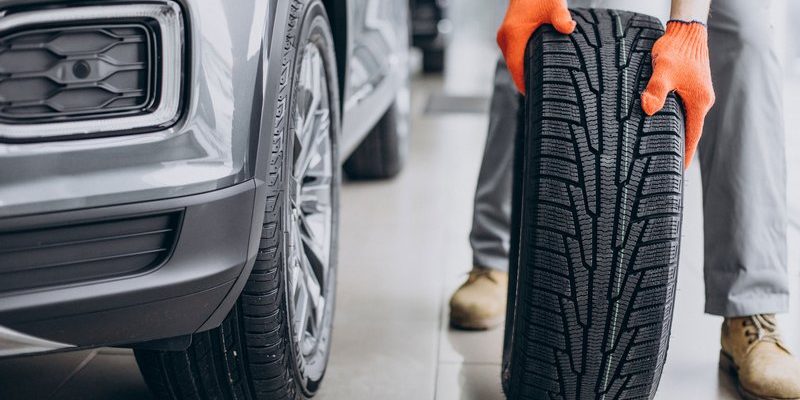
If you’ve never swapped out a battery in a fan remote before, it can feel weirdly intimidating. Hunter is a well-known brand, and their remotes often look like sleek little gadgets from a sci-fi movie. Some have hidden compartments or seem sealed shut. But honestly, with a little direction and patience, this is a quick, manageable fix—a lot like changing the batteries in your TV remote, just with a few unique quirks. Let’s break down the steps, clear up any confusion, and get you back to a breezy living room in no time.
Understanding Hunter Ceiling Fan Remote Models
Before you pry anything open, it’s helpful to know what kind of remote you’re dealing with. Hunter offers several styles. Some are classic rectangular remotes with physical buttons, while others are slimmer or feature touch controls. You might see a “Hunter” logo at the bottom or on the back, and occasionally, a small screw or slide panel that hints at where the battery lurks.
The most common Hunter ceiling fan remotes use a small “coin cell” battery (like CR2032), but older or more advanced models may use AAA or AA batteries instead.
If you still have the remote’s manual (or can spot a model number inside the battery compartment), check it—otherwise, a close look at the panel seams and button layout will give you clues about how to open it up. Don’t stress if you can’t identify the exact model. The replacement process is nearly the same for most Hunter remotes, with only minor variations in how the compartment opens.
Gathering The Tools And Replacement Battery
Let me explain why people sometimes hesitate: it isn’t about the battery itself, but not knowing if you need any oddball tools. The good news is you usually don’t need anything fancy.
- Replacement battery: Most Hunter remotes use a CR2032 or CR2025 coin cell, but some older ones need AA or AAA batteries. Pop open the compartment before heading to the store so you buy the right size.
- Small Phillips screwdriver: Occasionally, there’s a tiny screw holding the battery cover in place. A precision screwdriver or even an eyeglass kit works.
- Clean, dry hands: It might sound silly, but greasy fingers can make opening the case and handling batteries annoyingly slippery.
There’s no harm in having a small dish or tray handy to hold screws, especially if your work area gobbles up tiny parts. If you’re someone who always loses things under the couch, trust me—this can save a lot of frustration.
Opening The Battery Compartment On A Hunter Remote
This is where most people get stuck. Hunter remotes often hide their battery slots with clever panels. Here’s the thing: you may see a small sliding door on the back, a hatch that pops out, or a screw-on cover.
– If it slides, gently push the panel in the direction of the tiny arrows (if any).
– For pop-out doors, look for a small groove along the edge. Use your fingernail or the tip of your screwdriver to pry it open.
– With a screw, remove it completely, and keep it somewhere safe—those things vanish fast.
Be gentle—forcing the panel risks snapping the plastic. If the cover feels stuck, double-check for hidden screws or latches. Some Hunter remotes do a good job of disguising these. Take a breath, work slowly, and you’ll have it apart in less than a minute.
Removing The Old Battery Safely
It might sound basic, but the old battery can sometimes stick, especially if it’s been in there a long time. Grip the edge with your fingernail or a non-metallic tool (like a plastic spudger or even a pen cap). Avoid using sharp metal objects, as scratching the battery contacts inside the remote can cause bigger problems, like poor connections or even shorting out the board.
Don’t forget to note which side is facing up! Most coin cell batteries have a “+” sign on one side that usually faces up or outward, but every remote is a little different. Take a photo or draw a quick sketch if you’re forgetful (we’ve all been there).
Dispose of the old battery properly—never toss them in household trash. Many hardware stores recycle these tiny batteries, and it keeps everyone a bit safer.
Inserting The New Battery In A Hunter Ceiling Fan Remote
Now for the satisfying part. Take your new battery out of its packaging, making sure not to touch both sides at once (this can leave little oil smudges that might affect performance, though it’s rare). Line up the “+” side with the way the old battery fit—again, a quick photo beforehand saves guesswork.
Press it gently into place, making sure it snaps flat and snug. A loose connection here is a common culprit if your remote still doesn’t work after replacing the battery. If your remote uses AA or AAA batteries, double-check the polarity symbols. Mixing this up won’t destroy the remote, but it won’t work until you get it right.
Replace the cover, making sure it clicks or slides back securely, or reattach the screw if needed. If the panel feels wobbly or doesn’t sit flush, double-check that the battery is seated correctly and that nothing’s jammed inside.
Testing And Troubleshooting After Battery Replacement
Time to check your work! Point the remote at your ceiling fan and try any button, like the power or speed controls. Most Hunter remotes should respond instantly, but if nothing happens, don’t panic.
Here’s a quick troubleshooting checklist:
- Remote still dead? Try a second fresh battery—sometimes even new ones are duds.
- Check battery orientation: Did you put the “+” side in the right direction?
- Look for loose contacts: Are the metal springs or clips inside the battery compartment bent out of shape?
- Fan not responding? The remote might need to be re-synced or paired with your fan. Look for a tiny “learn” button or consult your manual for code/reset instructions.
If you’ve tried all this and the remote is still MIA, there’s a chance it’s the remote’s circuitry, not just the battery. In that case, contacting Hunter support or considering a replacement remote is your best bet.
Syncing And Pairing Your Hunter Ceiling Fan Remote
Sometimes, after swapping the battery, your Hunter remote might lose its “connection” with the fan. This can feel like you’re back at square one, but the fix is simple.
Most Hunter fans have a little button—sometimes labeled “Learn” or “Pair”—either on the fan itself (near the light kit or motor housing) or inside the remote’s battery compartment. To re-sync, press and hold this button until you hear a beep or see the fan lights flash. Then, press the main power or speed button on your remote. If you see or hear a response, you’re synced up and good to go.
Here’s the thing: old universal remotes may require a reset or code entry. Double-check your manual or Hunter’s online support if your fan uses a dip switch system for pairing (tiny white switches inside the remote and fan receiver).
If you’re not sure, open both the remote and the fan canopy (after turning off the power!) and see if the dip switch codes match. They need to be identical for the remote to control the fan.
When To Consider A Universal Remote Or Replacement
Honestly, if your Hunter remote is cracked, corroded inside, or just plain lost, it might be time for a replacement. Universal ceiling fan remotes work with many Hunter models and usually offer basic features like light control and speed adjustment. They’re easy to pair, and you can often find them in stores or online.
However, sticking with a Hunter-branded remote usually guarantees the best code compatibility and avoids headaches with pairing, programming, or troubleshooting. Keep in mind that universal remotes may not support every advanced feature your original Hunter remote had (like dimming, breeze mode, or reverse fan direction).
Quick comparison:
| Hunter OEM Remote | Universal Remote |
| Perfect compatibility, all features | Works with most fans, basic features only |
| Usually more expensive | Budget-friendly |
| Matches your existing remote’s look and feel | May have generic appearance |
Pick what fits your needs, and always double-check which remotes work with your fan model.
Tips To Extend Battery Life And Maintain Your Hunter Remote
It’s tempting to stash your remote on the coffee table and forget about it. But a few small habits make a difference:
- Keep the remote out of direct sunlight and away from heat sources—extreme temps drain batteries faster.
- Don’t jam on the buttons repeatedly. If the fan doesn’t respond right away, give it a second. Continuous pressing shortens battery life.
- If you’re heading out of town for a while, pop out the battery. This prevents slow drainage or corrosion inside the compartment.
- Wipe the remote occasionally with a dry, lint-free cloth. Clean contacts mean a better connection, and you’re less likely to get dirt stuck in the buttons.
You might be surprised how long a single CR2032 can last if you treat your remote gently. Most Hunter ceiling fan remote batteries go a year or longer between replacements.
Closing Thoughts On Replacing A Hunter Ceiling Fan Remote Battery
Swapping out the battery in your Hunter ceiling fan remote isn’t rocket science, but it does ask for a little attention to detail. With the right battery, some gentle hands, and patience, you’ll have your fan humming along again in minutes. Remember the steps: check your remote model, open the compartment gently, match the battery orientation, and test carefully. If you hit any snags, don’t panic—troubleshooting is usually straightforward, and help is never far away.
At the end of the day, a working remote lets you enjoy all the comfort your Hunter ceiling fan offers—without needing to get up every time the temperature shifts. That’s a simple kind of convenience worth keeping around.
